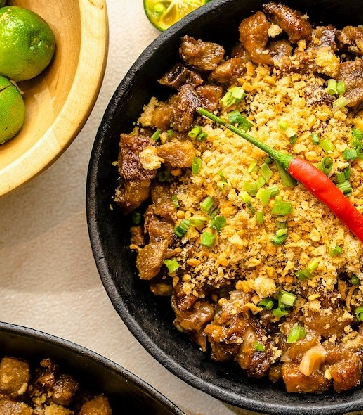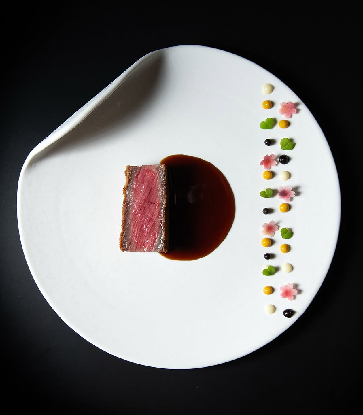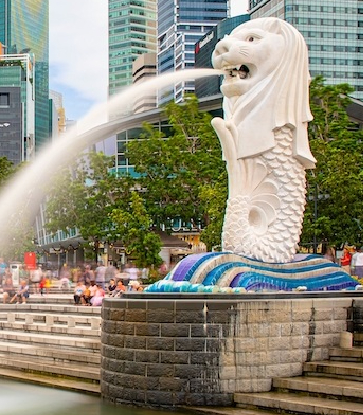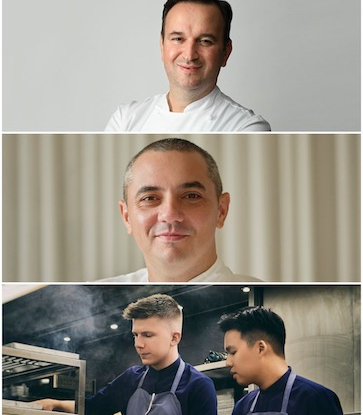For more than a decade, Chinese dim sum chef Li Huai Zhi worked in the kitchens of some of Singapore’s biggest Chinese restaurant groups — Tung Lok, Paradise and Crystal Jade — turning out hand-pulled noodles, delicious dumplings and dim sum. In 2004, he took a leap of faith and left his restaurant career to open a hawker stall with his wife. They opened Supreme Ramen Xiao Long Bao in a coffeeshop in Tiong Bahru.
“I wanted to venture out and challenge myself and experience something new,” he says. “To do what I wanted to do and cook what I wanted to cook.”

In 2013, Khoo and co-founder Ben Tham left their promising careers in fine dining and opened A Noodle Story in Amoy Food Centre. “As a chef, I was motivated by my love for cooking, to gain a deeper understanding of a cuisine, ingredients and techniques. It’s the same motivation I have as a hawker, except now, my name is on the food and there’s a certain satisfaction in that.”

Similarly, the three co-founders of Project Warung — Muhd Shah Indra Jasni, Lee Syafiq Muhd Ridzuan Lee and Mohd Ridzuan Ayob — all have star-studded resumes that include internships and positions at restaurants like DB Bistro, Bar-Roque Grill, JAAN and two-Michelin-starred La Pyramide in France. At their last roles, Syafiq and Ridzuan were on the opening team of Terra which went on to win a Michelin star in 2016.
When they turned in their toques and set up gourmet burger joint Burgs By Project Warung at Golden Mile Food Centre in May 2017, they were adamant about only putting in their own savings and not taking loans, even if it meant going without an income for the first six months.
“People were shocked that we would give up our steady jobs and restaurant careers to become hawkers, but we wanted to show them we could build this business with our own efforts” says Syafiq.

The relatively lower barrier to entry into the hawker trade is attractive for smaller businesses. Last December, Li relocated Supreme Ramen Xiao Long Bao to its current location at a non-descript kopitiam on Holland Drive, investing less than $20,000 and hiring a former colleague to help full-time.
A Whole New Ballgame
To be sure, diving headfirst into the hawker trade has not been a walk in the park for the trio at Project Warung. “We had gone into the hawker business with a restaurant mindset and the first month was just a huge culture shock. Customers don’t want to wait and there’s no ‘picking up the sauce’ at the last minute here,” laughs Indra. “At the start, we were working from seven in the morning till midnight every day, seven days a week.”

“We needed to change the game plan,” says Syafiq. “We learnt as we went along, streamlining the menu and the workflow, and improving on space planning.” For example, they started out making caramelised onions for their classic beef burger, but soon ditched the time- and labour-intensive process for a smarter — and arguably more delicious — condiment of fried shallots.
“People talk about the hawker business like it is full of restrictions: having to keep the food costs and prices low, having to work within a small space and churning a large volume within a short time. But we’ve found that, rather than being a restriction, it’s actually given us the opportunity to find creative solutions,” says Syafiq. “Becoming a hawker hasn’t been a ‘downgrade’. Rather, it’s allowed us to grow individually as chefs.”

For all three businesses, running a successful hawker stall is not the end game. Earlier this year, A Noodle Story expanded overseas with a flagship franchise outlet in Hong Kong’s Causeway Bay area with plans for a second in Tsim Sha Tsui by the end of the year. Li is in talks to open a second outlet of Supreme Ramen Xiao Long Bao at a nearby coffeeshop, while Burgs launched its second outlet at Viva Business Park just 10 months into opening its first.
“I’d say we’ve achieved only 20% of what we’ve set out to do with Project Warung,” says Syafiq. “We want to open an outlet in all four corners of Singapore and, eventually, the dream is to build a local fast food brand, focusing on quality at an affordable price point.”
Khoo, on the other hand, has set his sights on building a team to launch a new concept next year. “The goal has always been to scale it so the business can run itself, so you can have the freedom to explore new ideas.”
Li adds: “It is much tougher work, but it’s a simple and satisfying life. I work with my wife now and I get to interact with the customers. Whatever amount that we make, it’s for ourselves and our family. I’m definitely happier now as a hawker.”






















